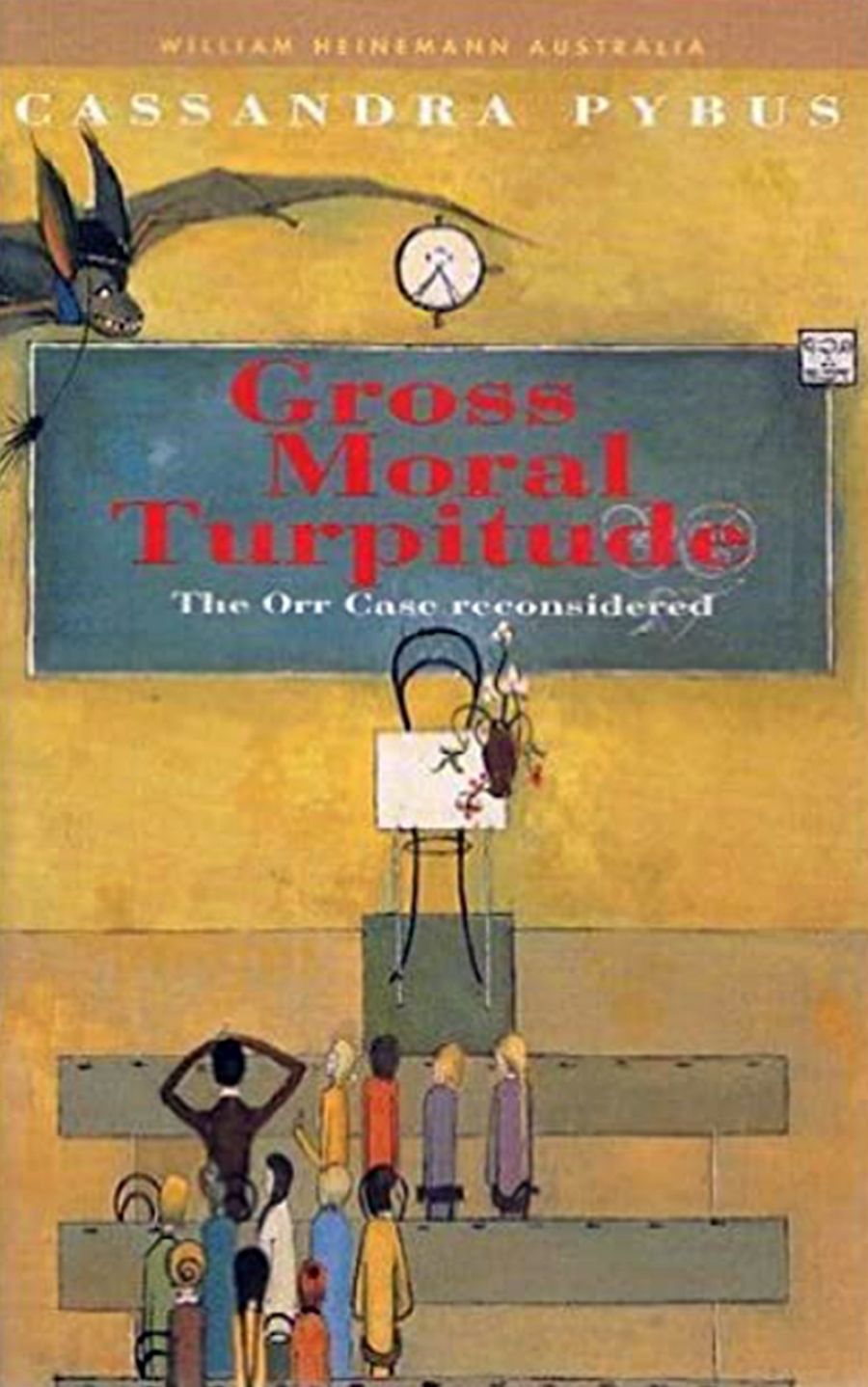
- Free Article: No
- Contents Category: History
- Review Article: Yes
- Custom Highlight Text:
There were no winners in the first round of the Orr Case. Sydney Sparkes Orr lost his job as Professor of Philosophy at the University of Tasmania in 1955. Suzanne Kemp, who had accused him of seduction, lost her reputation. Her father, who had supported her accusations, was subjected to all manner of speculation and innuendo. Edwin Tanner, a mature-age student who had complained about Orr’s poor teaching and his requests for professional favours, had his life ruined. Dr Milanov, Orr’s colleague who had protested that Orr was harassing him professionally, found himself subjected to just the kind of persecution he had fled in his native Serbia.
- Book 1 Title: Gross Moral Turpitude
- Book 1 Subtitle: The Orr Case reconsidered
- Book 1 Biblio: William Heinemann Australia, $19.95 pb
There are no winners either in this reworking of the story three decades later. Indeed the roll-call of those who were made to look foolish by the Orr case has lengthened to include now the philosophers who supported the ban on the chair, the university staff associations who, in trying to uphold principles of academic freedom and tenure, were in fact upholding a man who was neither principled nor fit to be one of their number, the vice-chancellor of the University of Tasmania and his selection panel, which chose to ignore expert advice that Orr was a philosophical lightweight, Sir Frederick Eggleston, who exerted undue influence in the appointment of Orr, and ‘Panzee’ Wright, who is shown to be both paranoid and vindictive about Tasmania, the university, and its legal adviser, his brother Senator Reg Wright. It is a sorry tale of delusion, deception, and paralysis. How could so many otherwise intelligent and thoughtful people trained in critical analysis have been so wrong, men such as Alan Stout, who was responsible for persuading his colleagues in Britain and America that they should boycott the Tasmanian chair, or the session of the Scots Kirk in Hobart, who initiated its own inquiry clearing Orr, or Brian Fitzpatrick and Clem Christesen, who used Meanjin blatantly to support Eddy and Orr? Some answers are suggested – Cold War paranoia, the fear/hope of a McCarthyist plot, and Tasmanian family feuds – though none seems quite satisfying.
At the beginning of this new account, hopes are raised for the rescue of Suzanne Kemp. This is not to be. Once more she appears as victim, no longer the femme fatale ‘la Kemp’ as she was portrayed at the time, but a sad enigma, overshadowed now by the subsequent activities of Orr, Eddy, and Wright. In her conclusion, Cassandra Pybus writes: ‘I do not imagine she will welcome this book. For reasons I entirely understand, she declined to talk to me.’ Those reasons, however, are not made clear to the reader. Significantly, the subject headings in the cataloguing note make no mention of women, feminism, or sexual harassment. It is entered as a study of university government. Pybus concludes that the University of Tasmania was wrong in the way it hired Orr, though right to fire him as it did. Though she would like to argue that mainland Australia has a tendency to assume the worst of Tasmania, in fact it seems that some of its most damaging critics have been renegade Tasmanians like ‘Panzee’ Wright.
So what has been the significance of the Orr Case? What were its long-term consequences for the University of Tasmania and Australian universities in general? The approach taken here does not really permit answers to such questions. There is a passing suggestion that this may have been the first case of sexual harassment made public in a university, but it is not treated systematically as such. Nor is there any obvious link to modern practice either in handling appointments or cases of harassment. Emphasis on individual testimony and private papers in the sources results in a story of personalities which takes no account of the evidence of contemporary public opinion or the impact of the case in a wider world. The absence of context is bound to produce more misreading. Though it is noted that universities then were almost exclusively malt, the significance of this, both for staff and for their female students, is not explored. Perhaps it was thought that too much detail would clutter a racy account of an academic scandal, intended only to be read as a fable or moral tale.
Unfortunately it is more than a story. These were, are, real people. Suzanne Kemp is a bit older than me. As young women and university students in the 1950s, we knew about her, and we knew what kind of a rough deal she got. That was the way they kept girls like us in line. The law’s treatment of rape victims has been reformed, a little, but what choice does a woman have even now – to tell her own story and be dragged naked to the metaphorical stake, or to maintain silence and some shreds of dignity so the bastards think they got away with it, again. Does it matter now what happened to Orr and his mates? Anyhow, they are dead. That is why their story can be told. Suzanne Kemp is still alive. She prefers to remain silent. Does that matter?


Comments powered by CComment